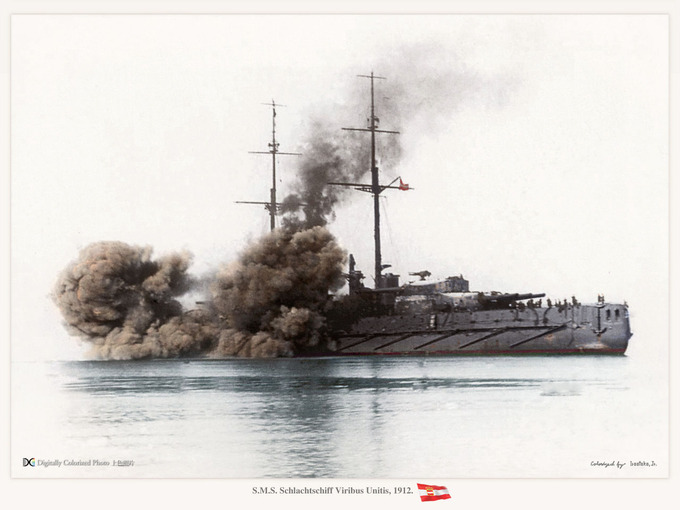Jura, these next few posts are for you. I thought I would show the USS Texas compared to the Viribus Unitis. They were definitely contemporary dreadnaught battleships.
The Viribus was launched in June 1911. The Texas was launched in May 1912.
The Viribus was commissioned in December 1912. The Texas was commissioned in March 1914.
Both ships saw active duty in word War I.
But that is where the similarities end. The Viribus, right at the end of the war, after being turned over to the new Croat/Serb state, was sunk by mines attached to her hull. The Texas went on to serve through the interim years between wars, and then throughout World War II in both the Atlantic/European Theater and in the Pacific Theater, ultimately becoming a museum ship after the war.
Here are the characteristics of each, Texas vs Viribus
Displacement: 27,000 tons vs 20,000 tons
Length: 573 ft vs 499 ft
Beam: 95 ft vs 92 ft
Draft: 29 ft vs 28 ft 7 in
Speed: 21 knots vs 20 knots
Range: 7,060 nmi vs 4,200 nmi
Crew: 1,042 vs 1,087
Main Guns: 10 x 14" vs 12 x 12"
2nd Guns: 21 x 5" vs 12 x 6"
Other: 2 x 3" vs 18 x 3"
After a major refit, and then following heavier armament in world War II, several characteristics for Texas changed:
Displacement: 33,000 tons
Beam: 106 ft.
Draft: 32 ft.
Range: 15,400 nmi
Crew: 1,810
Secondary Guns; 6 x 5"
Other: 10 x 3", 40 x 40mm, 44 x 20mm
Here are some pictures:
Viribus Unitis
 USS Texas
USS Texas
 Viribus Unitis
Viribus Unitis
 USS Texas
USS Texas

 then send me a Private Message) it'll take me hours ... I started with consulting
then send me a Private Message) it'll take me hours ... I started with consulting



















